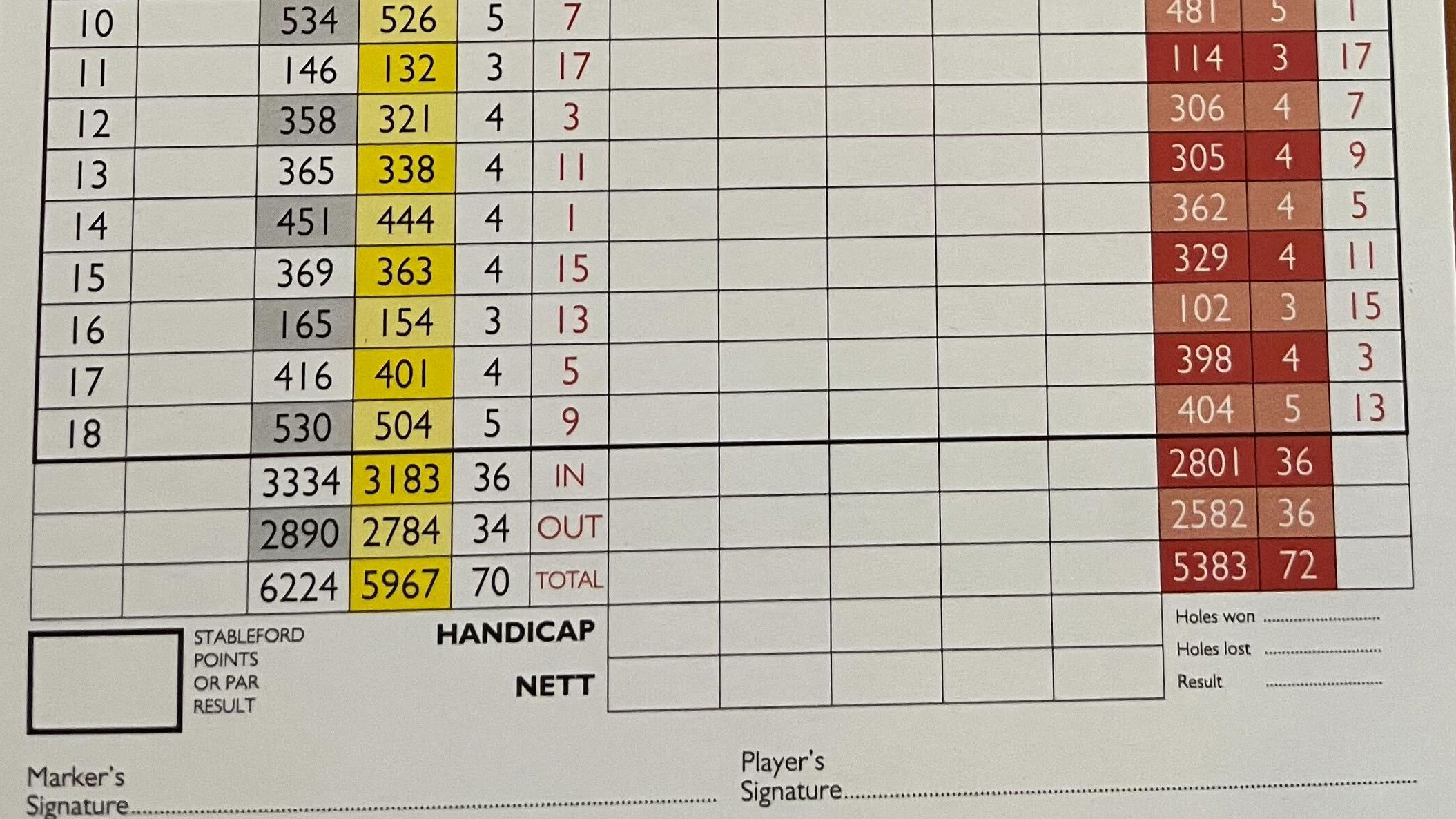I've Had Enough Of Par 70 Golf Courses... Stop Depriving People Of Par 5s!
When I look at the scorecard of a course I’m playing for the first time or sit down to watch a professional event, I’m always disappointed to see the number 70


After reading the headline of this article, you’d be right to assume I’m a slightly pedantic character. Normally, I can let things slide, but I’ve reached a point on this subject where I feel compelled to say something. Enough with par-70 golf courses!
I don’t understand why they’re so prevalent, both on tour and at golf clubs all round the world. If it were up to me, all golf courses would have six par 3s, six par 4s and six par 5s, like the Red at The Berkshire.
I’ve long been confused as to why layouts generally have far more par 4s than one- and three-shotters.
"We were always taught by our mentors, one of mine being Martin Hawtree, that there was a general formula that you applied to golf course design, and that was ten par 4s, four par 3s and four par 5s," says Jonathan Gaunt, who has worked on over 400 courses around the world.
While there’s “no written formula”, the 10-4-4 principle is seen as a good starting point when designing a course, but the site often dictates the routing.
If the four par 5s and par 3s are orientated north, south, east and west – another generally agreed principle – the par 4s can knit them all together. In the design world, having back-to-back par 3s or par 5s is often seen as lacking in imagination.
Another school of thought is par 4s have more scope for variety – one hole can be 260 yards and the next can be 440 yards, for example.
Subscribe to the Golf Monthly newsletter to stay up to date with all the latest tour news, equipment news, reviews, head-to-heads and buyer’s guides from our team of experienced experts.
While not necessarily agreeing with them all, I accept these arguments and understand the logic behind them. The 10-4-4 configuration makes sense. So why am I seeing so many courses with just two par 5s?

The 18th hole on the Red course at The Berkshire
Strategy and enjoyment
From a playing perspective, I’d have par 5s just below par 3s in my order of enjoyment. Par 3s are generally picturesque and they’re exciting, because you only have to hit one good long-game shot to give yourself a presentable birdie chance.
Par 5s also get the juices flowing. You stand on the tee with wind at your back knowing the hole is reachable in two if you strike two good shots. Even if you don’t and you’re wayward off the tee, there’s often an opportunity to get yourself back in play and in a position to reach the green in regulation.
Even if you lose a ball off the tee, you still have a chance to make par (or better) with the second ball and register a Stableford point (or more).
Par 5s also ask so many strategic questions. If the hole isn’t reachable in two, should you hit an iron off the tee for safety? Could 4-iron, 4-iron, 7-iron be a better option than a risky driver, a fairway wood and some form of half shot?
And what about if you have 270 yards to the flag. Should you hit a wood and push the ball up somewhere near the green, or play two 9-irons?
It’s a shame when golfers only get the chance to take on par 5s twice a round, and it’s a relatively simple problem to solve. I’m a huge advocate of long par 4s being turned into par 5s if the course has fewer than four long holes.
I appreciate variety in par 4s is important and a golf course should have some testing two-shotters, but is there not scope within ten par-4 slots to achieve this? I know space is often very limited and green relocations are expensive, but there’s often scope to move a tee box back 30 yards.

The iconic par-5 13th at Augusta
Tour courses
On tour, it’s a slightly different story. I’m not a fan of 30-under-par winning scores and so I understand why some holes that play in excess of 500 yards are listed as par 4s, but I’m always slightly disappointed when I look at the scorecard for the week and only see two par 5s.
Par 5s don’t have to be easy, either. Rough, bunkers, water, narrow fairways, out of bounds and other elements can be employed to make sure these holes aren’t automatic birdies.
But if it’s a choice between a 530-yard par 4 or a 530-yard par 5, I say make it a par 5. It’s more exciting to watch golfers making eagles than birdies, even if the concept of par is somewhat arbitrary – the person who completes 72 holes in the fewest number of strokes wins.
I’d hate to see holes like the 13th at Augusta National or the 16th at Riviera turning into par 4s because of their relatively modest yardage. If tournament organisers are concerned about the winning score potentially getting out of hand, they should make the rest of the golf course more challenging.
Golf courses don’t have to be long to be challenging. You can have a 7,200-yard layout with four par 5s where 15-under is a winning 72-hole score if you grow the rough, narrow the fairways, quicken the greens and introduce bunkers that are actually penal.
I may be in the minority, but I don’t like watching events like the Tournament of Champions and I don’t like courses that are set up like Bethpage Black in the Ryder Cup. Four par 5s and a somewhat challenging layout isn’t too much to ask, is it?

Nick Bonfield joined Golf Monthly in 2012 after graduating from Exeter University and earning an NCTJ-accredited journalism diploma from News Associates in Wimbledon. He is responsible for managing production of the magazine, sub-editing, writing, commissioning and coordinating all features across print and online. Most of his online work is opinion-based and typically centres around the Majors and significant events in the global golfing calendar. Nick has been an avid golf fan since the age of ten and became obsessed with the professional game after watching Mike Weir and Shaun Micheel win The Masters and PGA Championship respectively in 2003. In his time with Golf Monthly, he's interviewed the likes of Rory McIlroy, Justin Rose, Jose Maria Olazabal, Henrik Stenson, Padraig Harrington, Lee Westwood and Billy Horschel and has ghost-written columns for Westwood, Wayne Riley, Matthew Southgate, Chris Wood and Eddie Pepperell. Nick is a 12-handicap golfer and his favourite courses include Old Head, Sunningdale New, Penha Longha, Valderrama and Bearwood Lakes. If you have a feature pitch for Nick, please email nick.bonfield@futurenet.com with 'Pitch' in the subject line. Nick is currently playing: Driver: TaylorMade M1 Fairway wood: TaylorMade RBZ Stage 2 Hybrid: Ping Crossover Irons (4-9): Nike Vapor Speed Wedges: Cleveland CBX Full Face, 56˚, Titleist Vokey SM4, 60˚ Putter: testing in progress! Ball: TaylorMade TP5x
You must confirm your public display name before commenting
Please logout and then login again, you will then be prompted to enter your display name.